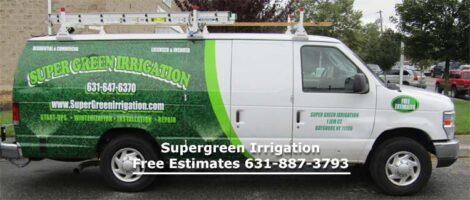Posted On:
Category:
10 Tips on Increasing the Efficiency of your Sprinkler System
10 Tips on Increasing the Efficiency of your Sprinkler System
Sprinkler systems offer the convenience of efficient and well-managed irrigation. Instead of manually watering the lawn and garden, it is possible to simply set up a program and let the system do the work. This automation can help gardeners and landscapers alike enjoy the beauty and bounty of their beautiful space with minimal effort. Unfortunately, a sprinkler system is not without its inefficiencies, and a certain amount of maintenance and care must be taken to ensure it is as effective as possible. To that end, this blog post examines some tips to maximize the efficiency of your sprinkler system, so you can enjoy the bounty of your land for years to come.
From minimizing the interference of the wind to optimizing the way water is distributed in your space, this blog post provides advice on creating a sprinkler system that is geared toward efficiency and effectiveness. Furthermore, with the help of some preventive maintenance tips and automated solutions, you can be sure of a sprinkler system that not only saves you time but is also economical, allowing you to get the most out of any investment. Read on to learn about the different ways you can increase the effectiveness of your sprinkler system.
1. Control the Water Pressure: When deciding on a sprinkler system, you should consider the water pressure that it produces since this is directly related to the efficiency of the system. High water pressure can actually decrease the efficiency of your system and lead to water waste. Therefore, it is important to install a pressure regulator on your system to ensure that the pressure of the water is at an optimal level for maximum efficiency.
2. Install a Water Timer: A water timer is a great tool for managing your sprinkler system. It allows you to control the time, duration, and frequency of your sprinkler system, thus helping you to conserve water. You should place the timer in an easily accessible location so that you can adjust it easily. Additionally, you should consider the type of water timer that is best for your particular system needs. For instance, some systems require manual input of date and time, while others will operate automatically based on programmable settings.
3. Choose the Right Sprinkler Head: Different sprinkler heads and nozzles are designed for different purposes. You should choose the right one for your garden or lawn depending on the task that you need to do. For example, the sprinkler head with the highest arc may not be the best choice if you want to water a small area. You should also consider the shape of your lawn or garden which can help determine the coverage area that different sprinklers provide. It’s important to choose a sprinkler head that will deliver the uniform coverage you are looking for and avoid areas of over-watering or under-watering.
4. Prevent Overwatering: It is important to ensure that you are not overwatering your garden or lawn which can lead to water waste and can also cause damage to your plants. Therefore, you should install a rain sensor that is designed to detect rainfall and automatically adjust the watering time. This will also help you save more water and time as you would not have to manually adjust the time for watering your plants.
5. Know Your System: It is important to familiarize yourself with your sprinkler system so that you can manage it effectively and make small repairs if needed. You should become familiar with the various components of your sprinkler system, including the water source, valves, pipes, sprinkler heads, and controller/timer. Make sure your system is free from debris and any obstructions that could lead to blockages. Knowing your system will save you time and money in the long run.
6. Check for Leaks: Make sure to regularly check for leaks in your system as even a small leak can cause a great amount of water waste. That water waste can also cause an increase in your water bill. Conduct regular inspections of your pipes and hoses, checking for small drops of water or large pools of water. If you do find a leak, act quickly to replace the part or call a professional plumber to help resolve the issue.
7. Adjust Sprinkler Heads: Over time, the spray pattern of your sprinkler heads may shift, causing water to land in the wrong place. Therefore, it is important to regularly adjust the spray pattern so that the water reaches the right place. To conduct this task, make use of the instructions printed on the sprinkler head or consult with a professional for assistance. If you’re going to do it yourself, remember to take your time and be careful so that you don’t end up damaging the sprinkler head.
8. Water in the Morning: Watering your garden or lawn in the morning is the most efficient way to do it as the temperature is lower and the wind is still. This will help to reduce evaporation and ensure that the plants get the most out of the water. Additionally, the cooler temperature in the morning will help to reduce diseases and pests that could potentially be a problem later in the day. Also, watering in the morning will help to ensure that your plants will have the optimal amount of water for the day when the sun is at its peak.
9. Clean or Replace Sprinkler Parts: You should make sure to periodically clean or replace the parts of your sprinkler system in order to ensure that it is working properly and efficiently. This may include cleaning out nozzles, filters, and pipes to prevent blockages, or replacing any worn or damaged parts like washers, hoses, and seals.
10. Use Mulch: Adding a layer of mulch to your garden or lawn will help to reduce evaporation and allow the water to reach the roots of the plants more effectively, thus making your sprinkler system more efficient. Mulch also helps to insulate the soil, protecting it from extreme temperatures, and keeping the area from becoming too hot or too dry.








